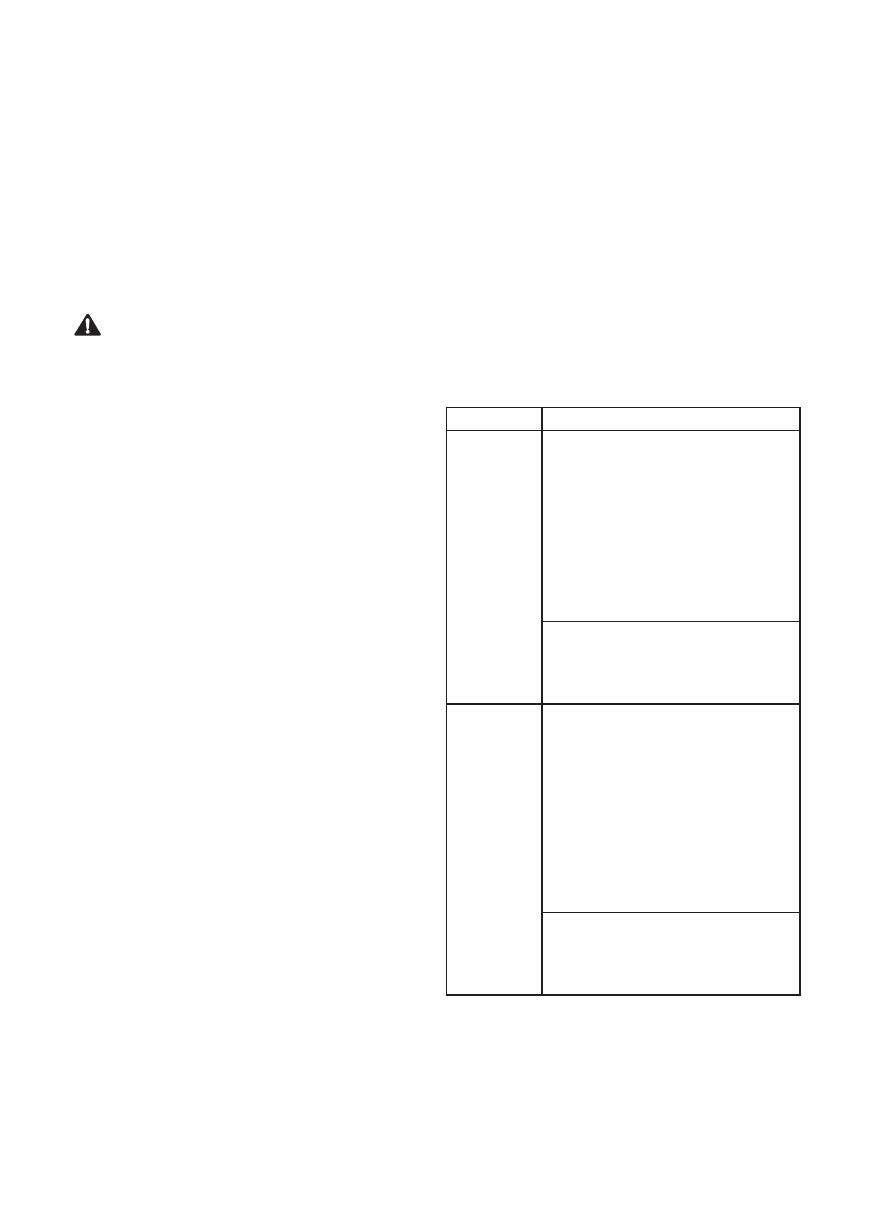
17
EN
To prevent siphoning, one of the following
methods must be used.
Method 1
When the drain hose is connected to a waste
spigot, the hose must be looped up to the
underside of the bench top and secured.
300 mm Min.
770 mm – 1000 mm
Bench top
Method 2
When the drain hose is connected to a separate
standpipe, it is essential that an airtight
connection be made. If not, it can induce odors.
700 mm Min.
1000 mm Max.
300 mm Min.
Air Tight
Connection
Standpipe 40 mm diametre Min.
Connecting the Water Supply
Hose
Connect the water supply hose to the water tap.
Water tap
Water supply hose
WARNING
• Do not shorten or damage the water supply
hose as it contains electrical wires and
components. It can not be detached or
removed from the appliance for installation
purposes.
• It is important that the water supply hose not
be tampered with, cut, disassembled, pulled,
or kinked. It contains electrical wiring inside
and if damaged, can cause an electrical
hazard.
CAUTION
• This appliance may be fed with either hot or
cold water. If the water connection can not be
maintained below 65ºC, the appliance must be
connected to cold water.
• Use sealant tape or sealing compound on the
tap's thread to avoid water leaks.
• Make sure that the line is not kinked or
sharply bent.
NOTE
• Before connecting the water supply hose to
the tap, turn on the tap to flush out foreign
substances (dirt, sand or sawdust) in the
water lines. Let water drain into a bucket.
• It takes about 3 – 4 minitues for the first
supply water.
EN
Preparing Electrical Wiring
Connect the appliance to an earthed socket in
accordance with the current wiring regulations,
protected by a minimum 15 amp circuit breaker
or time delay fuse.
Wiring must be two wires with earth.
The power cord should not be positioned
behind the appliance but within 1.2 meters of
the side so that the plug is easily accessible.
WARNING
• For personal safety, remove house fuse or
open circuit breaker or switch off power plug
before installation.
• Do not use an extension cord or double
adapter.
• The plug must be plugged into an appropriate
outlet that is properly installed and grounded
in accordance with all local codes and
ordinances.
• Repairs to the appliance must only be carried
out by qualified service personnel. Repairs
carried out by inexperienced persons may
cause injury or serious malfunctioning.
Contact our local service centre.
• Connect to a properly rated, protected, and
sized power circuit to avoid electrical overload.
Final Check
1
Turn on electrical power.
2
Turn on house water supply.
3
The door should open and close smoothly
and without harsh noises, if the unit has
been leveled correctly.
4
Run the appliance on a Rinse cycle to verify
proper operation and check for leaks.
Error Code Possible Cause and Solution
OE Error
Drain hose kinked or pinched.
Feed the drainage and supply
hoses through the hole under the
sink. Then gradually slide the
dishwasher into the cabinet while
pulling on the hoses under the
sink to take up any slack. This
helps avoid kinking the hoses or
trapping them beneath the
dishwasher.
Waste spigot under sink is
clogged.
Drill out the waste spigot under
the sink.
IE Error
Water supply line kinked under
dishwasher.
Feed the drainage and supply
hoses through the hole under the
sink. Then gradually slide the
dishwasher into the cabinet while
pulling on the hoses under the
sink to take up any slack. This
helps avoid kinking the hoses or
trapping them beneath the
dishwasher.
House water supply not turned
on.
Turn water on. Water pressure
may be too high or too low.



















